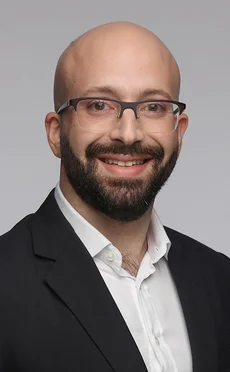
While Jedi powers may be needed to unpick the complexities of some order management workflows, but the dark side of these systems can be defeated by new enhanced solutions, says Medan Gabbay, chief revenue officer at Quod Financial

The world stands on the brink of a major transformation, driven by the integration of artificial intelligence (AI) into almost every application and device. Yet, in financial services, technology remains a decade behind mainstream trends, with a noticeable lack of new entrants to foster meaningful competition.
At the core of every financial institution, from the sell side to the buy side, lies an order management system (OMS). Although it may appear as simple and old-school as Excel, an OMS houses thousands of workflows, settings and fields essential for firms to accurately manage order flow, which is critical to their operations.
It is this complexity without sophistication that has led to the current issues in the market. Over more than 20 years, the OMS has evolved field by field and workflow by workflow into a Frankenstein’s monster of often contradictory requirements, sometimes so intricate that no single person in the company fully understands it. Despite being one of the most critical systems, it often remains undocumented, with deep integrations into other key systems. Recent ransomware attacks on such technology providers starkly highlighted the institutional vulnerabilities of these systems.
Should I buy?
The technology available for purchase often fails to meet client requirements because of several challenges faced by vendors. The existing technology is often too complex for significant architectural changes, and customers are reluctant to accept major updates for fear of impacting critical business operations, potentially leading to millions in losses each day.
Further complicating the issue, many technology vendors are products of multiple acquisitions, resulting in a fragmented system built by different teams using various languages. This complexity excludes new entrants as they lack the necessary features to compete and the time to catch up on functionality. Long contract terms with existing software providers also limit the feasibility of starting a solution from scratch. As a result, each OMS is a patchwork of independently developed software.
Each failure experienced by vendor software over the past decade will likely resurface in newly built software as countless edge cases and exceptions reveal themselves during production. Repeating even one of these errors could have catastrophic consequences for the firm
Adding to this complexity, regulatory and market changes mean that a newly acquired system can quickly become outdated. The ability to constantly modify your platform is crucial to maintaining business agility.
Customers are thus left with a difficult choice: accept a limited landscape with unmotivated and technologically challenged vendors or attempt to build an OMS from the ground up on their own.
Should I build?
Unsurprisingly, this plan often ends in disaster. Building software is expensive, not just because of the challenge of attracting top talent – who might prefer trendy tech companies or high-profile employers such as SpaceX – but because of the immense operational demands.
An OMS must function flawlessly, handling millions of trades per day, often 24/7, under fluctuating market conditions and interconnected systems. The software’s current reliability is built on overcoming previous challenges; each failure experienced by vendor software over the past decade will likely resurface in newly built software as countless edge cases and exceptions reveal themselves during production. Repeating even one of these errors could have catastrophic consequences for the firm.
Focusing on the US equities market, the OMS space is dominated by a handful of vendors vying for a share of the market. These alternatives have unique specialities but fail to offer a comprehensive substitute for the main incumbent system, nor do they present a compelling selling point to justify the risk and cost of change. Large vendors are often slow to innovate and are less inclined to risk their existing business with the introduction of drastic new features. Consequently, the market resigns itself to the status quo – there is no hope for innovation, there is no hope for new alternatives and each business must make do with what it has already implemented.
A new dawn for OMS
Buy-build-modify
The solution is simple: by purchasing an OMS that covers at least 80% of the required workflows and then collaborating with the provider to enhance the product, or using software development kits to build firm-specific capabilities into the platform’s application programming interfaces (APIs), firms can initiate these change processes while still allowing for customisation and unique features. This practical method avoids past pitfalls and achieves tailored solutions.
Your platform’s agility, interoperability, scalability and security are fundamental aspects that can significantly impact your trading operations. To remain competitive and efficient, modern OMS providers should incorporate several key elements into their offerings:
Microservices
Modern OMS solutions benefit from a microservices architecture, which contrasts with the typical monolithic designs. This approach constructs a system from many smaller applications, each with a specific function, allowing for easy changes and scalability. It facilitates platform customisations and performance improvements without impacting millions of lines of core code.
Native APIs
Unlike traditional OMS solutions, platforms built for automated trading often incorporate integration and APIs from the outset. The low-touch market has always focused on data, automation and the integration of multiple systems to create a single high-performance workflow. Such platforms offer extensive API interfaces, including FIX, C++, .NET, Java, REST, Python, Kafka, and more, ensuring robust integration capabilities.
Multi-asset trading
Strategically designed multi-asset trading desks are crucial for modern trading environments that integrate various asset classes. This approach allows multi-asset traders to interact seamlessly across different desks and enables related asset classes to automate actions. For instance, FX hedge activities can be directly linked to equities or exchange-traded derivatives, enhancing efficiency and co-ordination.
AI/machine learning and automation
OMS providers leveraging advanced architectures and technology can develop true data-driven workflows. Initially aimed at automating low-touch processes, these tools now deliver key workflows and pre-trade automation in the high-touch OMS space. Combining AI-based decisions with machine learning and powerful visual coding tools, such platforms represent the future of trading software.
Whether seeking a buy-and-build approach or an immediate replacement for OMS, smart order routing (SOR), algos or program-trading desk solutions, stepping into the future of the OMS/execution management system (EMS) market with advanced technology providers can transform core trading technology forever.
About Quod Financial
Founded in 2008, Quod Financial is a leading multi-asset OMS/EMS trading technology provider focused on automation and innovation. Specialising in algorithmic trading, SOR and internalisation of liquidity, Quod Financial leverages its data-driven architecture to support the demands of e-trading markets. Combining AI/machine learning-enabled decision-making tools with dynamic market access, Quod Financial offers a non-disruptive approach to deployment. As a management-owned business that has grown organically, Quod Financial provides a comprehensive set of features, making it an out-of-the-box solution for sell-side needs and a robust buy-and-build core technology for the buy side.
Sponsored content
Copyright Infopro Digital Limited. All rights reserved.
As outlined in our terms and conditions, https://www.infopro-digital.com/terms-and-conditions/subscriptions/ (point 2.4), printing is limited to a single copy.
If you would like to purchase additional rights please email info@fx-markets.com
Copyright Infopro Digital Limited. All rights reserved.
You may share this content using our article tools. As outlined in our terms and conditions, https://www.infopro-digital.com/terms-and-conditions/subscriptions/ (clause 2.4), an Authorised User may only make one copy of the materials for their own personal use. You must also comply with the restrictions in clause 2.5.
If you would like to purchase additional rights please email info@fx-markets.com

